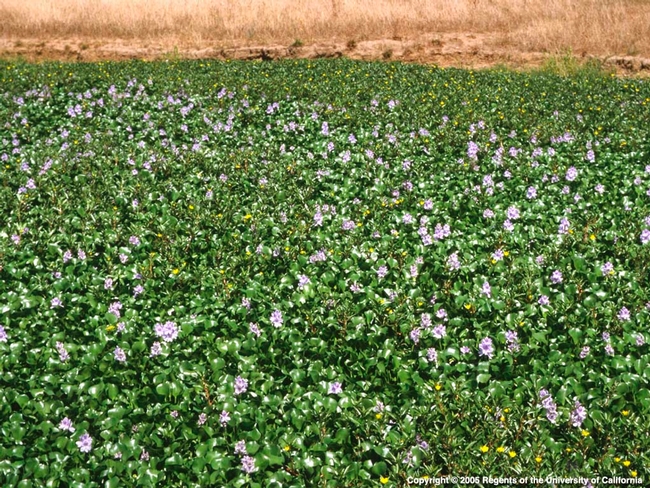Jul 30, 2011
We received several calls yesterday from a news organization in San Francisco about a CDFA biocontrol program for an invasive aquatic weed, water hyacinth.
I'm a terrestrial weed guy who works mostly in orchards and vineyards, not aquatics so I kept a low profile. However, I think biocontrol of invasive weeds is really interesting and decided to share two links about the program. This from KTVU Channel 2 in San Francisco: http://www.ktvu.com/news/28704763/detail.html and here is the official Press Release on the CDFA program: http://www.cdfa.ca.gov/egov/Press_Releases/Press_Release.asp?PRnum=11-041

Water Hyacinth_DiTomasso_Aquatic and Riparian Weeds of the West
Biological control (biocontrol) is the idea of using natural enemies of an invasive pest to keep its population in check. Cornell University has a nice page on biolgoical control here: http://www.biocontrol.entomology.cornell.edu/
In many cases, some of our worse invasive weeds (and insects, rodents, diseases, etc) come from different parts of the world. In their native range, they may not be serious pests because of other organisms that have co-evolved in the ecological system and keep the population at some sort of equilibrium level. However, when a weed or other pest is introduced (usually by our accidental or purposful efforts) into a new range, the various predators and diseases that checked the population in the home range may not be present. In some cases, the population of the invader has exploded. A very few examples include: kudzu in the southeastern US, annual bromes in the US Great Basin, yellow starthistle in California and much of the arid west, cogongrass in the south and southeast, Japanese dodder in California, spongeplant and hyacinth in the Sacramento Delta. A quick literature or internest search would also turn up hundreds of example of other invasive pests including insects, mollusks, plant diseases, and reptiles, rodents, and other vertebrate pests.
Invasive species are a problem that costs countries, states, and individuals a lot each year in terms of productivity and aesthetic quality losses, control measures, and research and development efforts. Our Mediterranean climate that is amenable to invasion with weeds from many types of envirnoments. I hope that the water hyacinth leaf hopper is able to establish a population and reduce the impacts of this aggressive and invasive weed in the unique and sensitive Sacramento River Delta environment.
Take care,
Brad
Attached Files: